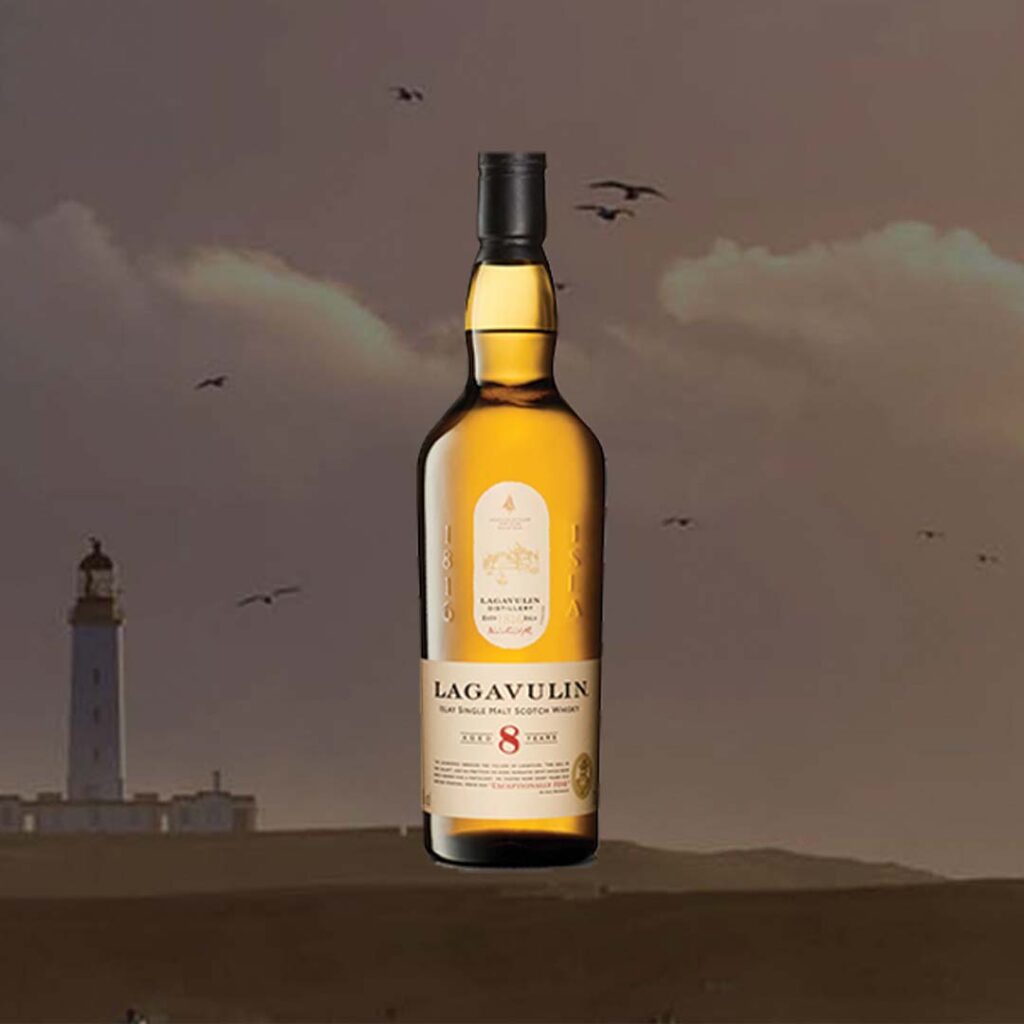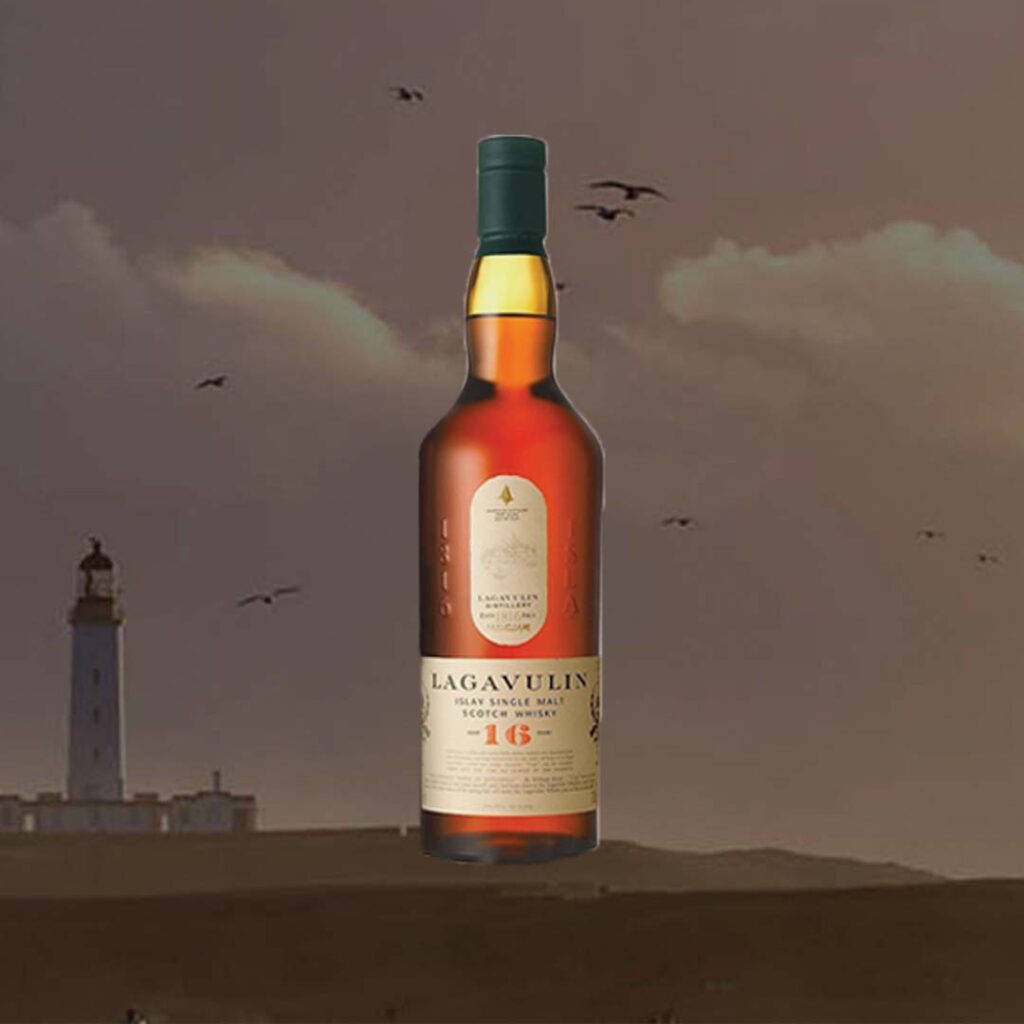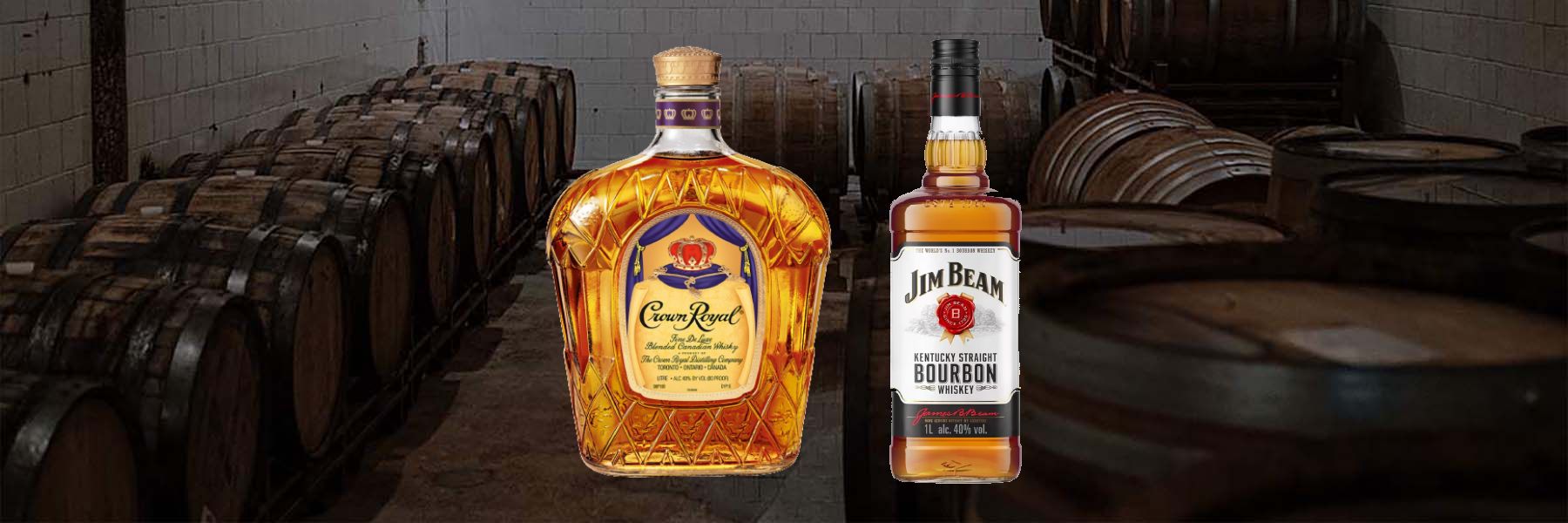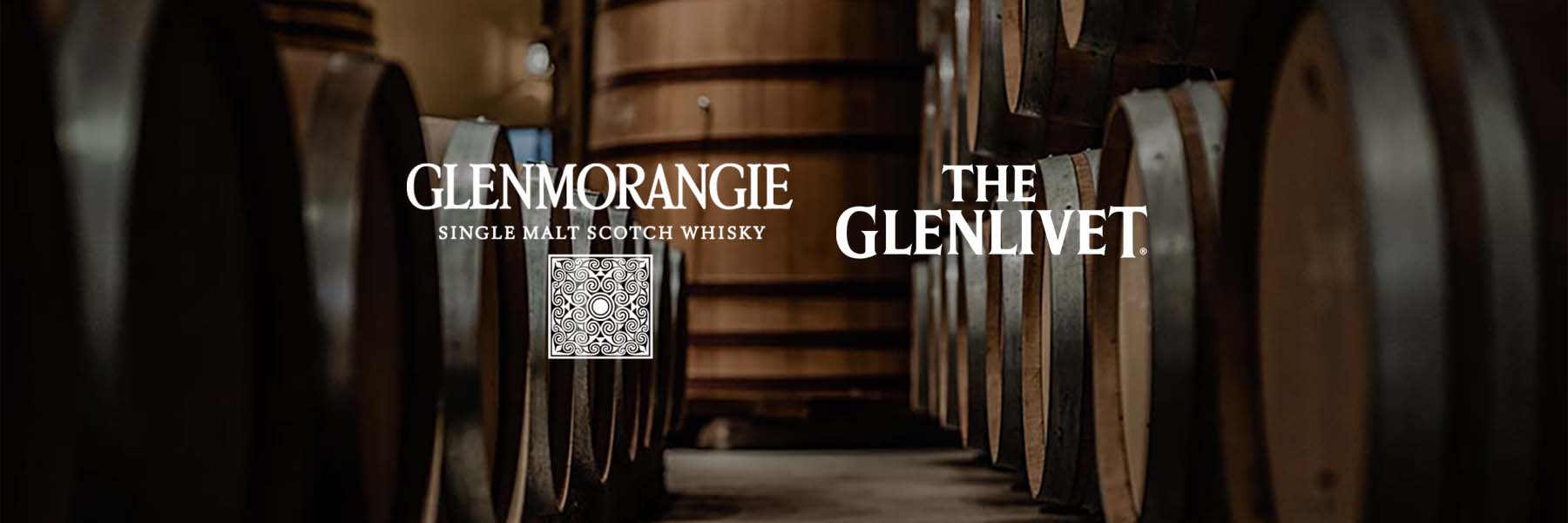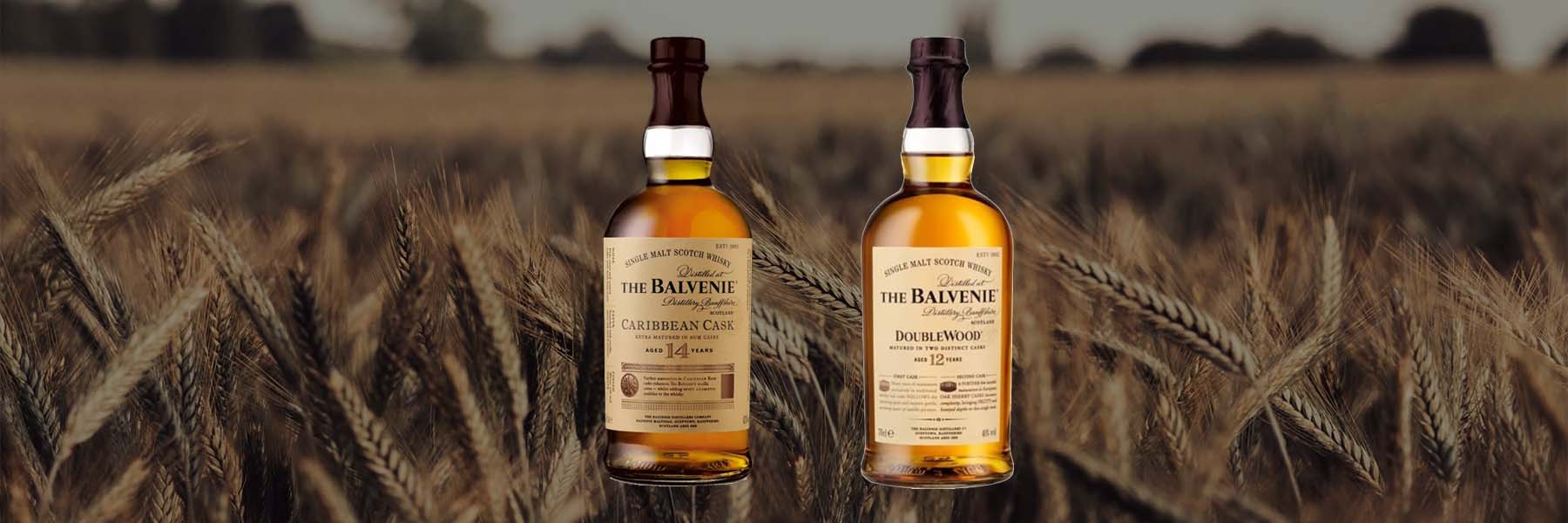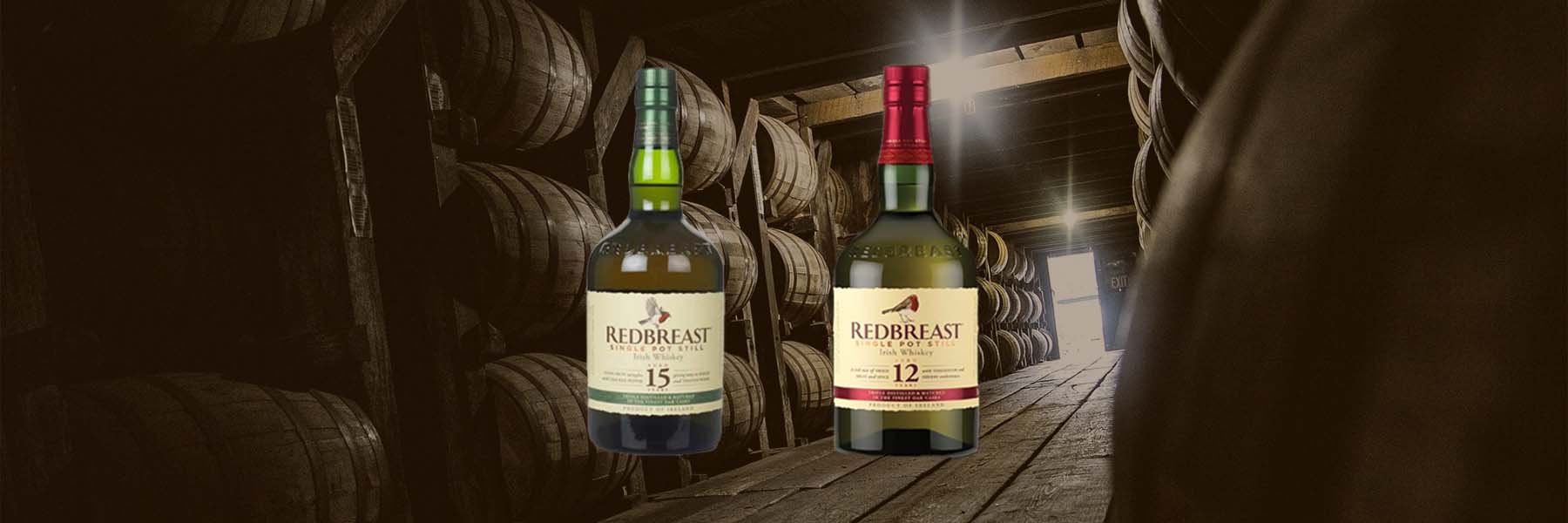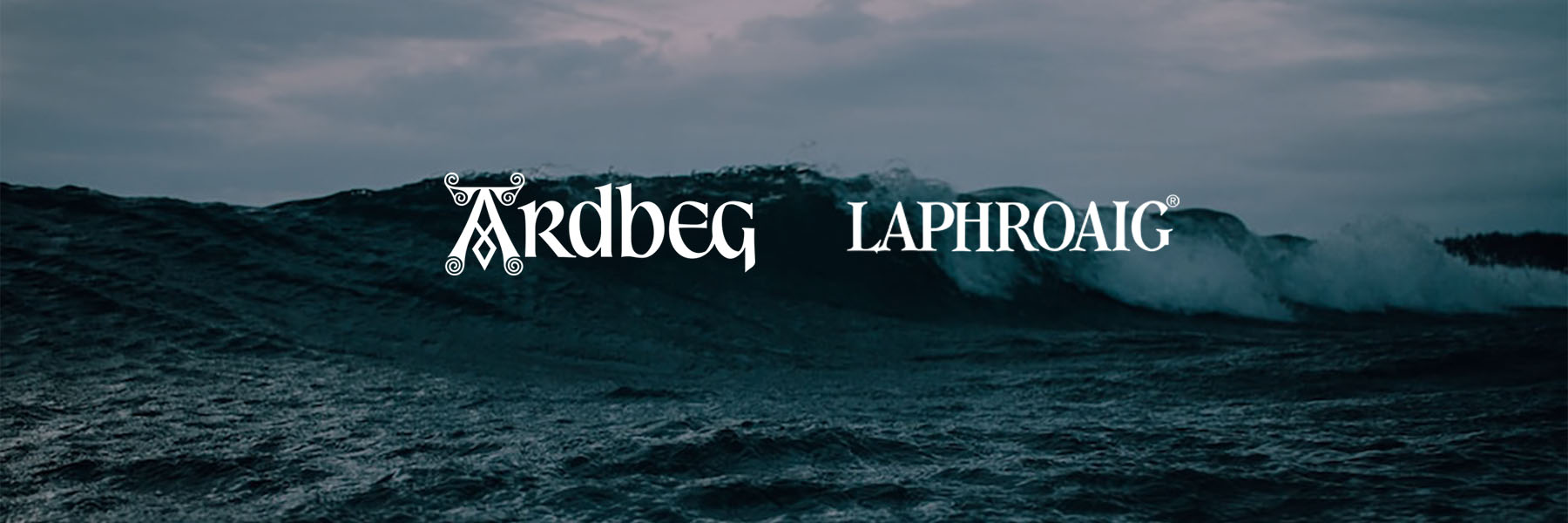Lagavulin 8 vs 16 | Which bottle’s best?
When it comes to Scotch whisky, few distilleries have a reputation as stellar as Lagavulin. From its origins in 1816, this Islay single malt has long been revered for its smoky and peaty flavours.
Amongst their core offerings are two of their most popular expressions. Lagavulin 8 and 16 year old. In this blog post we’ll explore the differences between these two offerings from one of Scotland’s most iconic distillers so that you can decide which is right for you.
Lagavulin 8 vs 16
Lagavulin 8 was bold and refreshing. It danced on my palate with a peaty punch and a surprising lightness that captured the wild spirit of Islay. A symphony of smoky sweetness and citrusy hints unravelled in my mouth, leaving a warm finish that reminded me of crisp, ocean-kissed coastline.
Lagavulin 16 on the other hand, painted a richer, deeper portrait. A potent blend of profound smoky sweetness was complemented by sea-salty hints that whispered tales of Islay’s rugged coastline. Each sip had unfurling complex layers of ripe fruits, toasted nuts, and a distinguished peat smoke that culminated in a long, spicy finish.
These siblings bear the revered Lagavulin distillery’s hallmark and owe their exceptional character to the time-honoured traditions of this establishment nestled in scenic southern Islay, Scotland. Lagavulin, with its notably slow distillation process, has been crafting these distinct characters since 1816.
As a bit of background, Lagavulin 8 was unveiled in 2016 to mark the distillery’s 200th anniversary. Even with its relative youth, Lagavulin 8 impresses with its magnetic charm and nuanced complexity, standing tall in the steeped Islay offerings and wider landscape of Scotch whisky.
Conversely, the Lagavulin 16, the distillery’s pride, matures gracefully over 16 years. This patience imbues a rich amber colour and a sophisticated balance of sweet, smoky, and salty notes; an entrancing experience for whisky lovers worldwide.
Lagavulin 8 vs 16: Quick-look Comparison
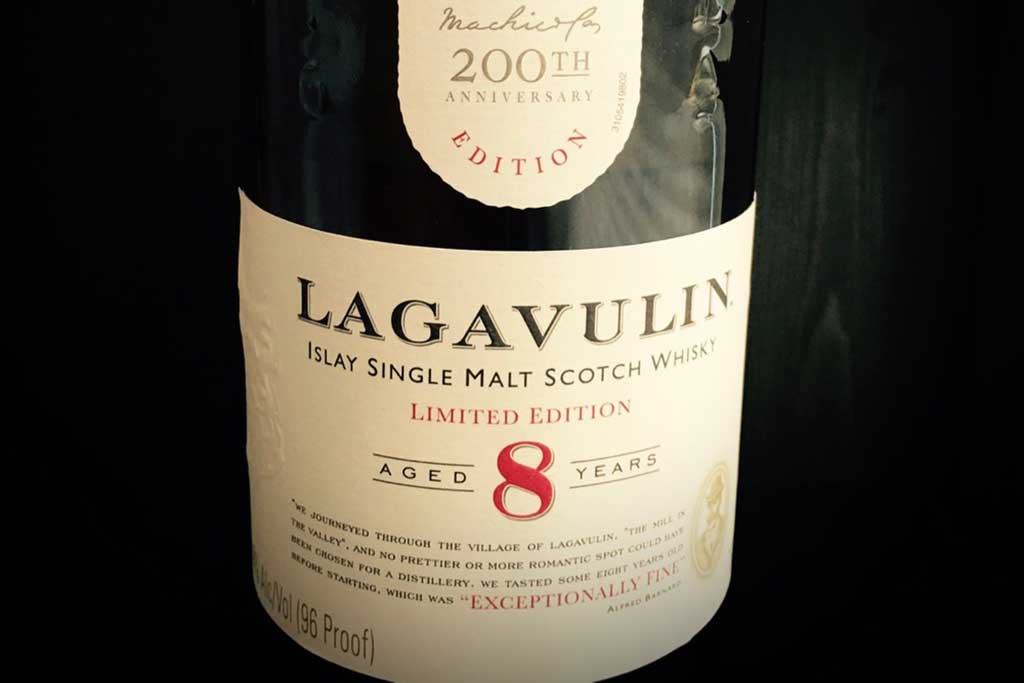
Lagavulin 8 Review
If you decide to invest in this bottle, here’s what you can expect: an enchanting play of flavours that is almost paradoxical. The Lagavulin 8 brings the classic peaty punch of Islay malts, but it does so with an unexpected lightness that will leave you pleasantly surprised.
Drawing comparisons to other Islay whiskies, the 8 year old’s flavour profile reminds me of the Caol Ila 12 but lighter and somewhat feistier. The Lagavulin 8 seems more ambitious like it’s got a point to prove. And it does so with aplomb.
Lagavulin 8 offers an intriguing introduction to the world of Islay whiskies. It’s peaty yet refreshing. Light yet complex. The smoky sweetness dances around on your palate, flirting with citrusy hints before leaving a warm, lingering finish.
On the positive side, its flavour profile is surprisingly versatile for a peaty whisky. Its sweet notes and hints of fruit and malt can make it appealing to a wide range of whisky lovers. On the downside, the Lagavulin 8 can be a bit harsh on the nose for the uninitiated. Its smoke can come across as intense, even overwhelming. And visually, its pale colour may not seem as inviting as the honeyed hues of other whiskies.
But these aspects do not undermine the whisky’s key attributes. The aroma is distinctive, filled with smoky sweetness, traces of fresh citrus, and subtle grassy notes. The finish, though not as long as its elder sibling Lagavulin 16, is satisfyingly warm and lingering.
The Lagavulin 8’s distinct character that sets itself apart from the competition is its ability to pack a complex range of flavours and a substantial character in a relatively young whisky. It proves that age isn’t the only measure of a whisky’s quality or complexity. The 8-year-old expression celebrates the distillery’s skill in creating a whisky that’s both light and deep, a combination that’s truly remarkable.
With an ABV of 48%, it’s robust but not overpowering. Priced at £57 / $70, it might seem steep for an 8-year-old whisky, but given its distinctive character and the overall experience it offers, I would say it’s particularly fair.
If you’re someone who enjoys the rich tapestry of flavours a good whisky can offer, or if you’re an Islay malt lover looking for a lighter, refreshing yet complex option, Lagavulin 8 could be an excellent choice. Pour it on the rocks to amplify the taste.
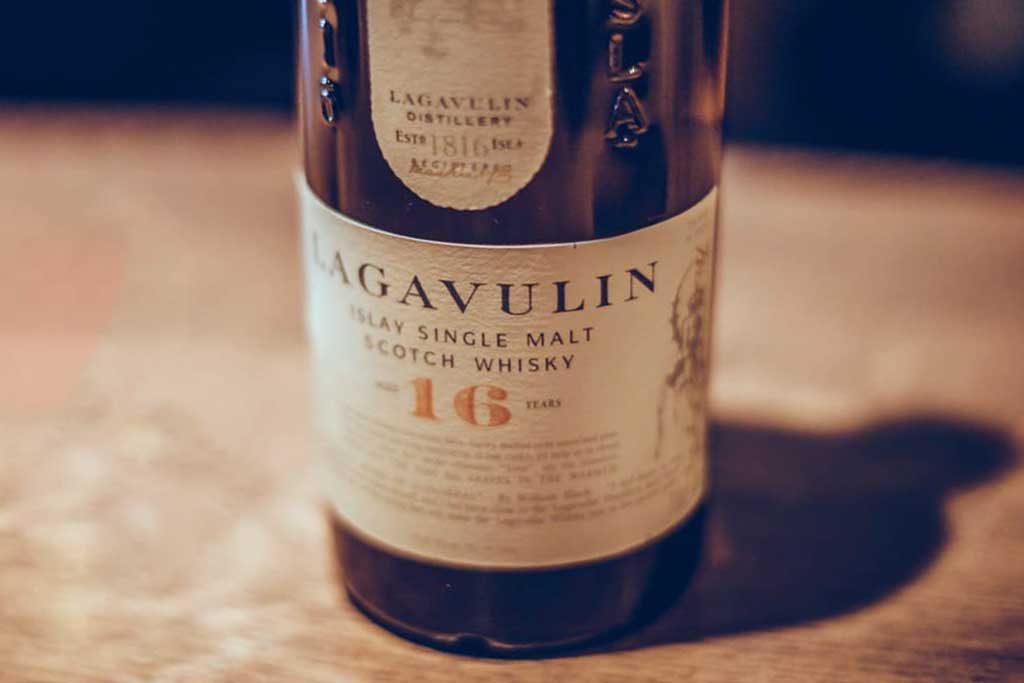
Lagavulin 16 Review
The Lagavulin 16 needs very little introduction. Known as the quintessential Islay malt, it brings to your glass an ensemble of rich, smoky sweetness and deep sea-salty hints.
In terms of flavour, Lagavulin 16 could be compared to Laphroaig 10. Both are Islay whiskies with a robust peaty character. But, Lagavulin 16 tends to be less medicinal and a tad sweeter, with a more sophisticated balance of flavours.
Each sip unfurls layers of complex flavours; ripe fruits and toasted nuts. And of course, that distinguished peat smoke, ending in a long, spicy finish. It’s the romance of a late-night campfire on a remote beach, the comfort of an old leather armchair, and the thrill of a good mystery novel—all bottled up.
Lagavulin 16 has a well-balanced flavour profile. It’s peaty but not overwhelmingly so, sweet but not cloying. The intertwining notes of fruit and malt add complexity and depth. However, just like its younger sibling, the smoky aroma could come off too strong if you’re new to peated whiskies. It’s fairly intense.
This whisky has an initial burst of rich sweetness and sea-salty hints with a warming and lasting finish. Visually, its deep amber colour resembles that of pure honey. For me, I’d pick this emboldened golden liquid over it’s younger sibling.
The 16 is a symphony where each note, while assertive, never overpowers the other. It’s this intricate balance that has earned Lagavulin 16 its place as an Islay classic. I personally find it best enjoyed neat or with a drop of water to open up its complex profile.
The Lagavulin 16 comes with an ABV of 43%, robust yet mellow enough for a relaxing dram. Interestingly, it’s slightly less potent compared to the 8 year old’s 48%. As for the price, at £85 / $108, it’s certainly on the higher end of the spectrum. A bit expensive perhaps, especially for newcomers. You could buy one and a half bottles of the 8-year-old with this one.
Considering the depth and sheer sensory experience it offers, I wouldn’t say it’s worth it. But it’s. However, if you’re the type that relishes in expensive editions, this is a great bottle to have on your shelf.
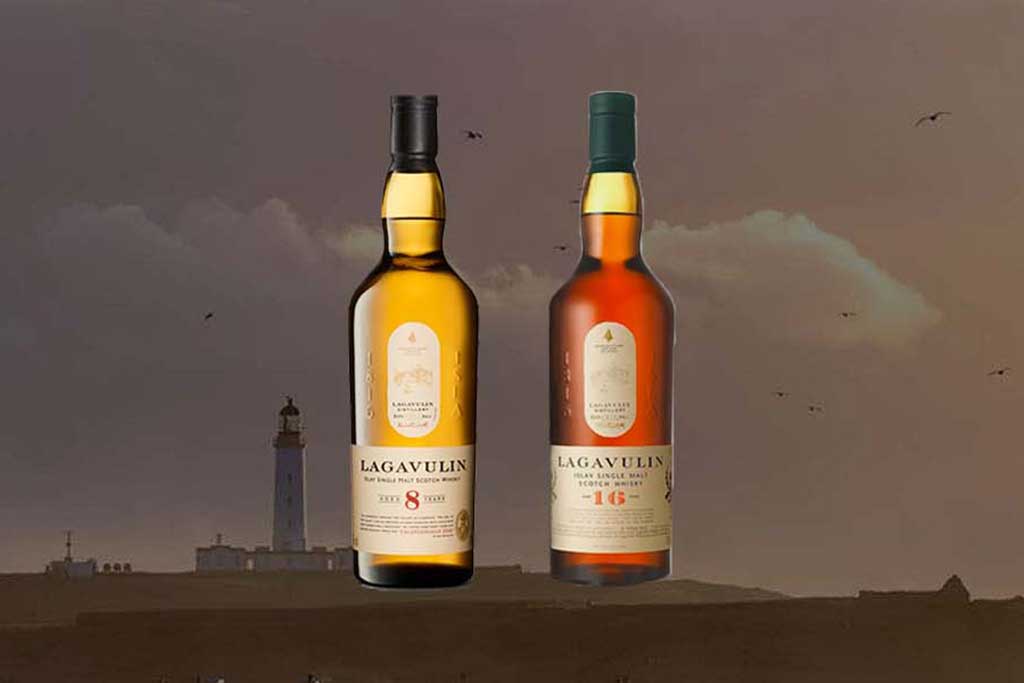
Comparing Lagavulin 8 vs 16
No doubt about it, both have comparable expressions of their own. There’s a wide maturity gap of 8 years and the differences are conspicuous (not to mention the prices).
Nose Comparison
Lagavulin 8 approaches with a youthful, fresh nose. Its peaty smoke is bold yet lighter than the 16, infused with a clean, zesty citrus note, quite a surprise for an Islay malt. Despite its lighter smokiness, it allows the sweeter and fruitier undertones to be appreciated, presenting an enjoyable balance.
Lagavulin 16 leads with a robust, smoky scent, mingling with a subtle touch of iodine and sea salt– a reminder of its coastal heritage. This smoky profile is softened by delightful undertones of dried fruit and vanilla, resulting in an inviting and rich bouquet of aromas.
Mouthfeel Comparison
Lagavulin 8 is lighter on the tongue, yet there’s a spirited robustness to it that makes it stand out. It doesn’t linger as long as the 16, but its vibrant character and depth leave a memorable impression.
Lagavulin 16 feels more mature, weighty, and full-bodied. It coats your palate beautifully, leaving you to savour it slowly and luxuriously. It’s an experience that feels sophisticated and well-rounded.
Flavour Comparison
The 8 offers a different play on flavour. Younger and bolder, it counters with a vibrant mix of citrusy sweetness and smoky peat. Its flavours are crisper, showcasing a medley of apple, pear, and lemon zest, balanced against the backdrop of peaty smoke. It doesn’t shy away from asserting its flavours, making for an engaging and dynamic experience.
When it comes to flavour, Lagavulin 16 expresses the essence of Islay’s tradition—deep, rich, and layered. It kicks off with a mellow sweetness, intertwined with intense peat smoke, a touch of iodine, and hints of rich, ripe fruits. You may even detect a hint of cocoa, vanilla, and toasted nuts, creating a symphony of complexity that’s deeply satisfying.
Finish Comparison
The Lagavulin 8 concludes with a shorter, but no less memorable finish. It leaves a trail of smoke and sweet citrus, ending with a gentle touch of spice. The 8’s finish is more fleeting, but it packs in as much complexity and satisfaction as its older counterpart.
The Lagavulin 16’s finish is longer and more comforting, much like the end of a slow-burning hearth fire. The sweet and smoky notes linger, gradually evolving into a warming spice that leaves a lasting impression.
ABV Comparison
The alcohol by volume (ABV) in a whisky can have a significant effect on its overall character. The Lagavulin 8 stands a touch stronger at 48% ABV, while the Lagavulin 16 is bottled at 43%. What does this mean for your sipping experience?
For starters, the higher ABV of the Lagavulin 8, asserts a more potent and impactful flavour. It brings out the character of the whisky in a more profound way, allowing the smoky, peaty notes to shine through strongly. This punchier profile means it’s a dram that commands your attention. It’s bold.
The Lagavulin 16, on the other hand, with its slightly lower ABV, offers a smoother, more approachable taste. The 43% ABV is not lightweight by any means, but it does provide a gentler introduction to the whisky’s rich, complex flavour profile. It’s mellowed and mature, with a fine balance of smoke, sweetness, and sea salt.
Price Comparison
The 8-year-old expression comes at a more accessible £57 / $70, while the 16-year-old will set you back £85 / $108. Price-wise, the Lagavulin 8 undoubtedly wins this. But in terms of value and which deserves your investment, you can see my final choice further below.
The Lagavulin 8, though younger and lighter, offers a taste profile that’s vibrant and bold. It’s a good value-for-money proposition, providing a balance of quality and cost that few whiskies in the mid-range can match.
The Lagavulin 16, on the other hand, is the distillery’s flagship expression. The extra years of maturation bring depth and sophistication to its flavour profile. However, this is probably a bit expensive for most. In fact, I might’ve ignored this.
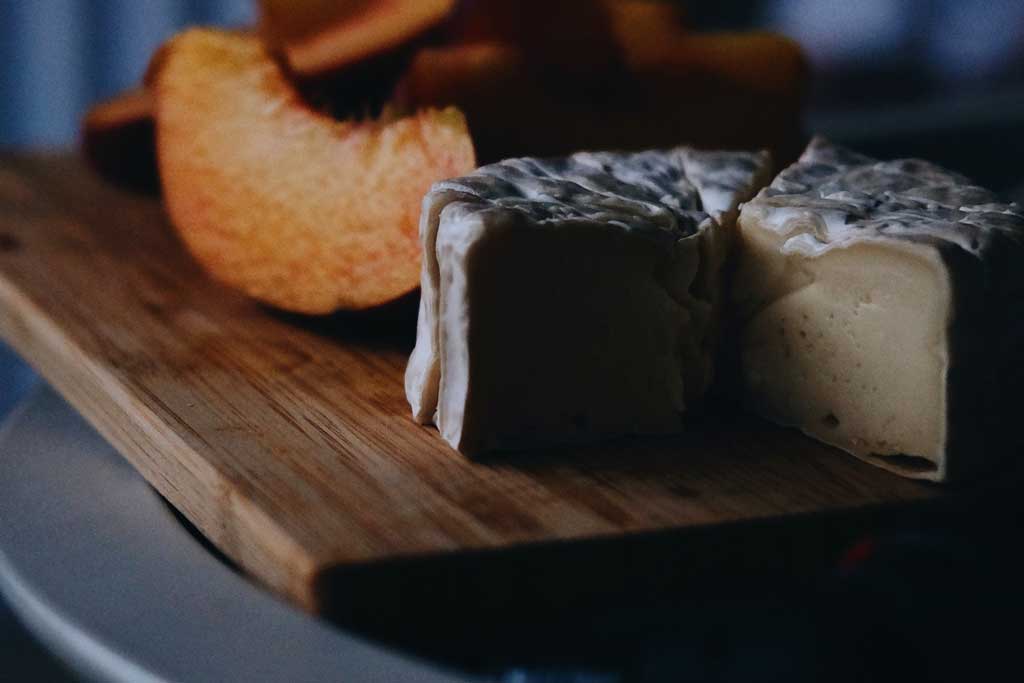
Food Pairings
The bright, citrusy notes of the Lagavulin 8, combined with its smoky finish, pair exceptionally well with lighter fare. Consider shellfish – perhaps a nice scallop dish or oysters on the half-shell. Light cheeses, like brie or camembert, also work well, their creaminess complementing the whisky’s vibrant flavours.
For the Lagavulin 16, you can venture into richer territory. Its robust character stands up to heartier foods. Smoked meats and aged cheeses are a delight when paired with this whisky. And if you’re in for a dessert, dark chocolate matches the rich, smoky sweetness of the Lagavulin 16 perfectly.
Whether you’re hosting a dinner or simply indulging yourself on a quiet evening, these pairings can elevate your Lagavulin experience to another level.
Lagavulin 8 vs 16: Final Thoughts
Wrapping it up, I’ve compiled a scoring table for a head-to-head comparison. These numbers reflect my personal experiences and preferences, aiming to give you an honest perspective.
| Lagavulin 8 | Lagavulin 16 | |
| Colour | 6/10 | 7/10 |
| Aroma/Nose | 5/10 | 5/10 |
| Mouthfeel | 7/10 | 6/10 |
| Taste/Palate | 5/10 | 6/10 |
| Finish | 7/10 | 7/10 |
| Total | 30/50 | 31/50 |
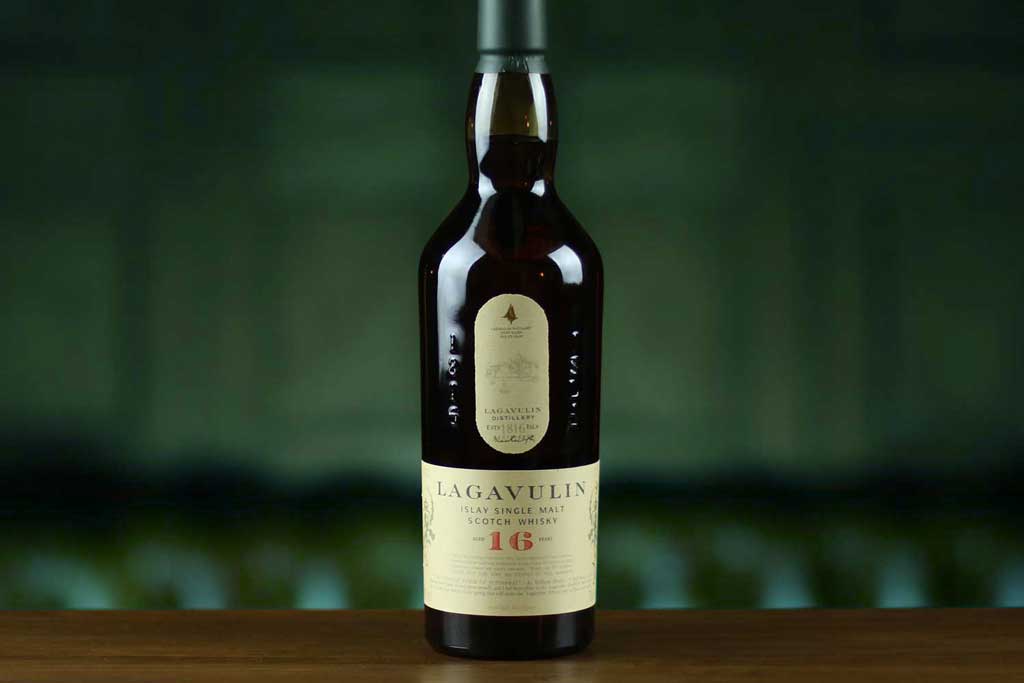
Lagavulin 8 vs 16: Author’s Choice
Looking at these scores, it’s clear that while both whiskies offer a great experience, my preference leans towards Lagavulin 16. It’s not a simple case of one being better or more expensive than the other, it’s about the details that resonate with my palate.
Take colour, for instance. Lagavulin 16’s deeper, amber hue is just more inviting to me. There’s a sense of depth, of a story well-told. Don’t get me wrong, the pale charm of Lagavulin 8 has its appeal, but it didn’t ignite the same anticipation.
In terms of aroma, both siblings offer an alluring nose that carries the essence of their Islay heritage. The 8, with its fresh, light peat and citrus notes, held its own against the more matured, robust, smoky sweetness of the 16. Each carried its fragrance well, creating an enticing aromatic profile.
However, the mouthfeel took a surprising turn. Here, the Lagavulin 8 edged out its elder. The youthful 8 delivered a slightly brighter, more vibrant feel on the tongue, the higher alcohol content adding a spark that the more rounded 16 lacked. Yet, it was a close call as the 16 offers a smooth, almost silky texture that caresses your palate.
On to taste, the heart of any whisky. The Lagavulin 16 came out slightly ahead against the 8’s. While the Lagavulin 8 does bring a delightful balance of smoky, sweet, and citrusy notes, I found the depth and complexity of the 16 more engaging. The layers of smoky sweetness, intertwined with deep-sea salty notes, created a narrative in each sip that fascinated me.
Their Islay roots ensured a robust, lingering finish, with the smoke and spice notes staying on for an encore. It was a satisfying end note for both whiskies, a round of applause that lingers in your senses, urging you to take another sip.
Both Lagavulin 8 and 16 have their unique offerings, a testament to the finesse of the esteemed Lagavulin distillery. Despite the higher score and my personal preference for the fuller profile of the 16, the 8 stands its ground, promising an experience that’s crisp and lively.
Other sibling rivalries
It’s not unusual to compare offerings from the same distillery. For closely aged bottles within the same range, you might be interested in our other comparisons such as; Glenlivet 12 vs 14 or the Glenfiddich 12 vs 14.



